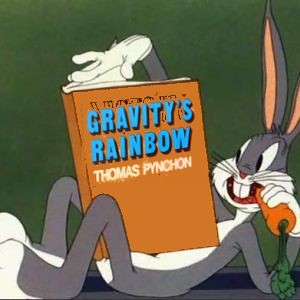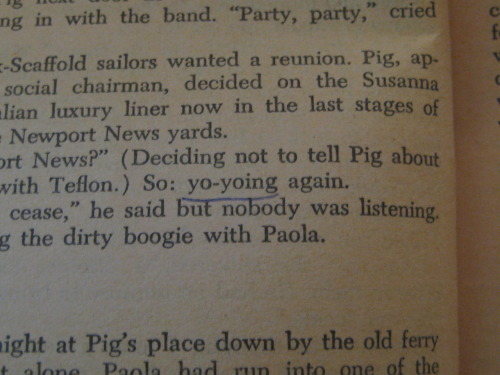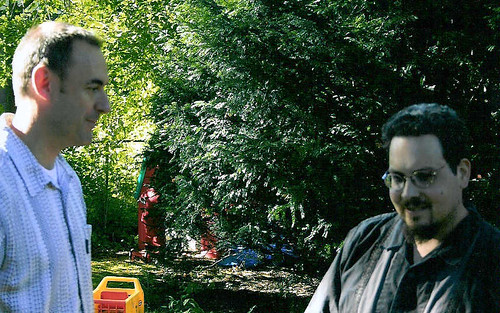|
|
Monday, February 8th, 2021
This weekend I was listening to Andrea Pitzer's marvelous history Icebound: Shipwrecked at the Edge of the World. I happened on it thanks to Pitzer's lovely thread detailing her search for the King of Zembla -- turns out there was one, very briefly and only by chance, and that Nabokov very likely knew the story. So anyways: listening to Icebound on Audible, and early in the book where it is talking about Barentsz making his plans to seek a Northeastern Passage, I hear a reference to how Dutch scientists thought the climate at the North Pole was temperate. This rings a bell for me as something the Chums of Chance in Against the Day might have believed... I asked Ms. Pitzer for further reading suggestions and she forwarded me a link to Colin Dickey's excellent article On the Open Polar Sea, about John Franklin's lost expedition to the North Pole... I was well down the rabbit hole by the time I hit on Dickey's reference to "Cornelius P. Broadnag, who claimed to have the journal of an American named Jonathan Wilder, which told of an “internal region” inside the earth that Wilder had traveled extensively." Well: Broadnag's account is online in full at Google Books, a little illegible though and you cannot copy and paste from it. So I spent Sunday putting it into Google Docs:
posted morning of February 8th, 2021: 1 response
➳ More posts about Against The Day
|  |
Sunday, January 7th, 2018

posted afternoon of January 7th, 2018: Respond
➳ More posts about Pretty Pictures
|  |
Saturday, January 6th, 2018
- A remake of Yellow Submarine. Keep the soundtrack, new video track.
- This is the next adaptation that should be made of a Pynchon novel:

posted evening of January 6th, 2018: Respond
➳ More posts about Readings
|  |
Thursday, December 25th, 2014
 May all your tidings be explicitly comfortable and feasibly joyous; may all your glory be in the highest. May all your tidings be explicitly comfortable and feasibly joyous; may all your glory be in the highest.

posted morning of December 25th, 2014: Respond
➳ More posts about Birthdays
|  |
Sunday, October 19th, 2014
"Be quiet the doctor's wife said gently, let's all keep quiet, there are times when words serve no purpose, if only I, too, could weep, say everything with tears, not have to speak in order to be understood."
-- Blindness, Jose Saramago
"Doc tried calling her name but of course words out here were only words."
-- Inherent Vice, Thomas Pynchon
posted evening of October 19th, 2014: 1 response
➳ More posts about Inherent Vice
|  |
Friday, September 13th, 2013
Just a few more days! I can hardly wait. Check out Jonathan Lethem's review for the NY Times.
posted evening of September 13th, 2013: 1 response
|  |
Friday, August second, 2013
Kind of flabbergasted that I have never encountered any mention of Glen Island amusement park in the writings of Thomas Pynchon -- it seems utterly implausible that the Chums of Chance (for instance) would never have paid a visit.

 A stone's throw from David's Island, which was devoted entire to the Army post, was Glen Island. This wooded islet had been rented, for the purpose of exhibiting little colonies of foreign people, by a good old sport, who confided to me that he liked champagne when it wasn't too "corky," and who had spent his whole life up to his present ripe age in exhibiting pretty girls and tickling the American palate with new and outlandish sensations. One year he would have Eskimos living in glass huts frosted to look like ice, with real Eskimo dogs and sleds; another, he would show a community of Hottentots, as unclothed as New York laws would tolerate, with their round straw huts and African drums. And lo and behold! this year he had imported and exhibited, alongside of a group of Sioux Indians living as they lived, a colony of Puerto Ricans, living as they lived, in their little thatched houses, and making the so-called "panama" hats. These jÃbaros were from Cabo Rojo, a coast town noted for the excellent straw hats made there for a century or so. And they ALL had hookworm. A most intimate friendship sprang up between the young military doctor and these homesick sons and daughters of Borinquen, who were perfectly delighted to find someone who could speak to them in their own tongue, and to whom they could complain —for the jÃbaro loves to complain. They were useful to me not only as sources for a continuation of my study, but also as living examples of this new disease, on which I now was asked to discourse at Me annual meeting of the Westchmer County Medical Society. I did so; and no detail was missing—even the sacred eggs were brought into the glaring sunlight of New York's sophistication.
↻...done
posted morning of August second, 2013: 5 responses
➳ More posts about La casa de la loca
|  |
Friday, August third, 2012
 Two old, good friends from my days on the pynchon-l are collaborating -- one from beyond the grave no less -- on a fun new blog. The Fischer Pynchon is the lovely Christine K.'s reading of a copy of V. that she got from the estate of David Marc Fischer, PBUH. She is posting photos as she goes along of his annotations and underlinings, a memorial to a friend as we near the anniversary of his passing. Two old, good friends from my days on the pynchon-l are collaborating -- one from beyond the grave no less -- on a fun new blog. The Fischer Pynchon is the lovely Christine K.'s reading of a copy of V. that she got from the estate of David Marc Fischer, PBUH. She is posting photos as she goes along of his annotations and underlinings, a memorial to a friend as we near the anniversary of his passing.
posted evening of August third, 2012: Respond
➳ More posts about V.
|  |
Monday, June 4th, 2012
 Hm, well I live (as I mention now and again) in the northeastern U.S., where it looks like conditions are not going to be particularly good tomorrow evening for viewing the Transit of Venus. If you live somewhere where the sun is shining, be sure to check it out! Cornell's Fuentes Observatory invites you to come take a look, rain date December 11, 2117. More info at nasa's Eclipse website. Hm, well I live (as I mention now and again) in the northeastern U.S., where it looks like conditions are not going to be particularly good tomorrow evening for viewing the Transit of Venus. If you live somewhere where the sun is shining, be sure to check it out! Cornell's Fuentes Observatory invites you to come take a look, rain date December 11, 2117. More info at nasa's Eclipse website.
Below the fold, from hyperarts, an account of Mason & Dixon's time at the Cape of Good Hope, where they observed the Transit 250 years ago; taken from the Monthly Notes of the Astronomical Society of South Africa, November 1951. (Thanks for the link, Henry!)
 In Astronomy and Geodetics the names of Charles Mason and Jeremiah Dixon are inseparably linked together. They were colleagues in making observations of the Transits of Venus in 1761 in 1769, in the survey of the famous Mason and Dixon Line in America and in the measurement of the length of a degree of latitude also in America. How they came to be at the Cape in 1761 is almost what Shakespeare would call a tragical-comical-historical-pastoral story which I regret must be considerably curtailed in this talk.
Though Gregory was the first to point out that transit of Venus over the Sun's disc afforded a means of ascertaining the solar parallax, Halley was the first to explain how it was to be accomplished. This he did in a paper read before the Royal Society in 1716 wherein he urged young astronomers who should live to observe the phenomenon to apply themselves diligently with all their might to the making of this observation so that it may redound to their immortal fame and glory. He assumed the Sun's parallax to be 2 seconds and the difference between the parallaxes of the Sun and Venus to be 31 seconds. It is impossible to go into the details of his prediction but it must be mentioned that he was careful to explain that the motions of the Nodes of Venus had not yet been discovered and could only be determined by such conjunctions of sun and planet. If the Nodes remained in the same place and if the plane of Venus's orbit were immoveable in the sphere of the fixed stars the planet would pass four minutes of arc below the Sun's centre.
He laid great stress on observtions being made either at Madras or Bencoolen on the western coast of Sumatra and also at Fort Nelson on Hudson's Bay in North America. At the first named places the whole of the transit would be visible while at Fort Nelson it would enter on the Sun's disc just before sunset and leave it immediately after sunrise. Moreover the duration of the transit would be 15 minutes 10 seconds longer at Fort Nelson that in the East Indies.
As the date of the transit approached astronomers of all nations got busy. The Royal Society raised money, including £800 from the Crown, to send Maskelyne to St. Helena and Mason and Dixon to Bencoolen. Maskelyne was unfortunate as bad weather prevented his observing the Transit. Mason and Dixon embarked on H.M.S. Seahorse but a French frigate of superior force attacked their vessel and killed 11 and wounded 38 of the crew. The Frenchmen sheered off when another English vessel hove in sight but the Seahorse had to put back to repair damages. Our astronomers had not bargained for fighting and they wrote to the Royal Society declining to proceed to Bencoolen but offering to go to Scanderoon. The reply was a letter which (let us hope) has never been equalled by that illustrious body before or since. It threatened inflexible resentment and prosecution with the utmost severity of the law. It prophesied an indelible scandal upon their characters and utter ruin, and concluded with an express command to go on board the Seahorse and enter upon the voyage be the event as it may fall out.
Fear of the Royal Society proved greater than fear of the French and the voyage began but they soon found that they could not hope to reach Bencoolen in the time, so by the advice and consent of the captain of their frigate they made for Cape Town, then of course a Dutch colony. As good patriots they could not admit to foreigners that an English ship had had a bad time from a Frenchman so with economy of truth they informed the Dutch Commander that diverse disasters in the Channel had unduly delayed them.
They asked to be allowed to spend some time here, that a site suitable for an observatory should be granted and that materials for the erection of the observatory should be supplied. All of which requests were duly complied with, and when they left our Astronomers wrote conveying their grateful appreciation of the assistance rendered to them. The site of the observatory was between John and Hope streets behind St. Mary's Cathedral. (I may mention here that thanks mainly to Mr. Wells, Capt. Cook's chief astronomer, and Sir Thomas Maclear the site of the taking of every astronomical observation made at the Cape can be ascertained with geodetic precision.) Its latitude was determined as South 33° 44' 42" and its longitude East 1hr.13m.35s.
Mason and Dixon arrived in Table Bay on April 27th, took the instruments on shore on May 2nd and set the clock going on May 4th. The body of the observatory was circular with a radius of 6 feet and the height of the wall was 5 feet. The roof which was made of board was conical in shape and was moveable. The opening was 3 feet broad and the roof was easily turned to any part of the heavens. The clock was fixed against two timbers of 10 x 8 inches section sunk 4 feet into the ground and joined by rods 1 inch in diameter. The pendulum of the clock was not altered in length. The other instruments were (1) a quadrant of one foot radius made by Bird and the property of the Earl of Macclesfield and (2) two reflecting telescopes, each 2 feet local length and magnifying 120 times, mady by Short. One at least of the telescopes had a micrometer because we find a small table for the adjustment of the nonus of the micrometer. On May 4th they fixed the quadrant satisfactorily and found by meridian observations of Procyon on the 4th, 5th and 6th that the clock has a losing rate of 2m 17s, 2m 18s, and 2 m 16s. The report says that on this date the observatory being now finished I put the clock into it, wound up the pendulum and set it to nearly sidereal time.
On the great day the sun ascended in the thick haze and immediately entered a dark cloud but in 20 minutes they obtained their first sight of Venus which of course was on the Sun's disc. Then it became first hazy and then cloudy but at 1h 18m 7s they obtained a measurement of the distance between the Sun's farthest limb and Venus's southern limb. They made 5 more similar measurements and also determined the apparent diameters of the Sun and Venus. Very soon after the transit finished the sky again became cloudy and remained so until night. Mason reports "When I saw the planet first its periphery and that of the Sun's were in a great tremour, but this vanished as the Sun rose and became well defined. Four minutes before the internal contact the Sun's disc was entirely hidden by cloud for about one minute."
During the remainder of their stay at the Cape our astronomers made many observations of stars at equal altitudes to obtain meridian passages, measured zenith distances of various stars for determining the latitude, and observed immersions and emersions of Jupiter's satellites for determining the longitude.
On September 28 they packed up their instruments and the next day put them on board the Mercury on which on October 3rd they sailed for St. Helena where they joined Maskelyne. There the clock was set going again (the length of the pendulum still not having been altered) and from Oct. 31st 1761 to Jan. 22nd 1762 they made observations for determining the rate of the clock. They left soon afterwards and reached England in safety.
© 1951 The Astronomical Society of South Africa
↻...done
posted evening of June 4th, 2012: Respond
➳ More posts about Mason & Dixon
|  |
Saturday, May 12th, 2012
This passage, from a Nov. 1960 letter from Billy to Brion, I am finding almost unbearably perfect, evoking disparate threads from Beckett to Carroll to Pynchon... This needs to be quoted in bold and with underlining (some editorial, some present in the "original"). Burroughs is pitching an idea for Brion to write in the voice of Hassan-i Sabbah, for Reader's Digest...
LOOK OUT at all times. See what was in front of you. Can a man see what is front of him with all his friends and enemies talking in his ear? Stop talking to yourself. Ah this shocks you? Listen: Words should be your servants. Use them. Do not let them use you. And when you do not need them send them to sleep. How to? Learn to know the word your servant. Look at words. Listen. Listen out at all time. Look and listen out at all times. Take any simple phrase like I am That I am. Repeat it. Now pass it back and forth through a sieve of punctuation. See the words changing meaning as the period rotates. Now change the position of the words. Now translate into other languages. You are stuck in word slots. You do not hear. Cut the word lines. And step out into silence. It is yours. It is everybody's. You do not see the trees when you walk down the street because of ‘The ’‘Word ’‘Tree’. Look at the word tree. Look? at the word tree. Look at? the word tree. Look at the? word tree. Look at the word? tree. Word look at the tree? Tree look at the word? Etc. Now look at the tree and you will see the tree not the word tree. You will begin to see everything sharp and clear like after a rain.
posted morning of May 12th, 2012: Respond
➳ More posts about Rub Out the Words
| Previous posts about Thomas Pynchon
Archives  | |
|
Drop me a line! or, sign my Guestbook.
•
Check out Ellen's writing at Patch.com.
| |


















